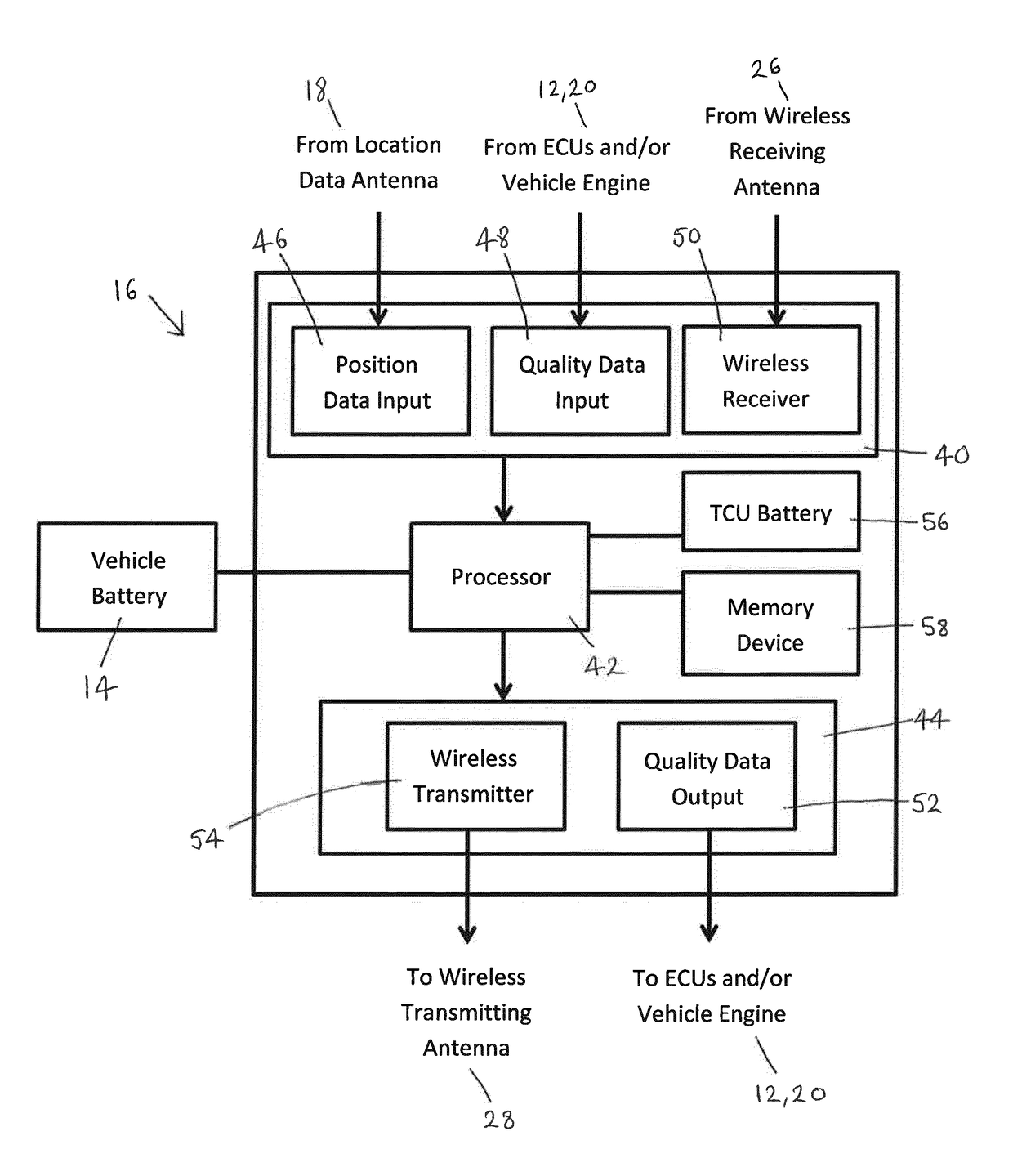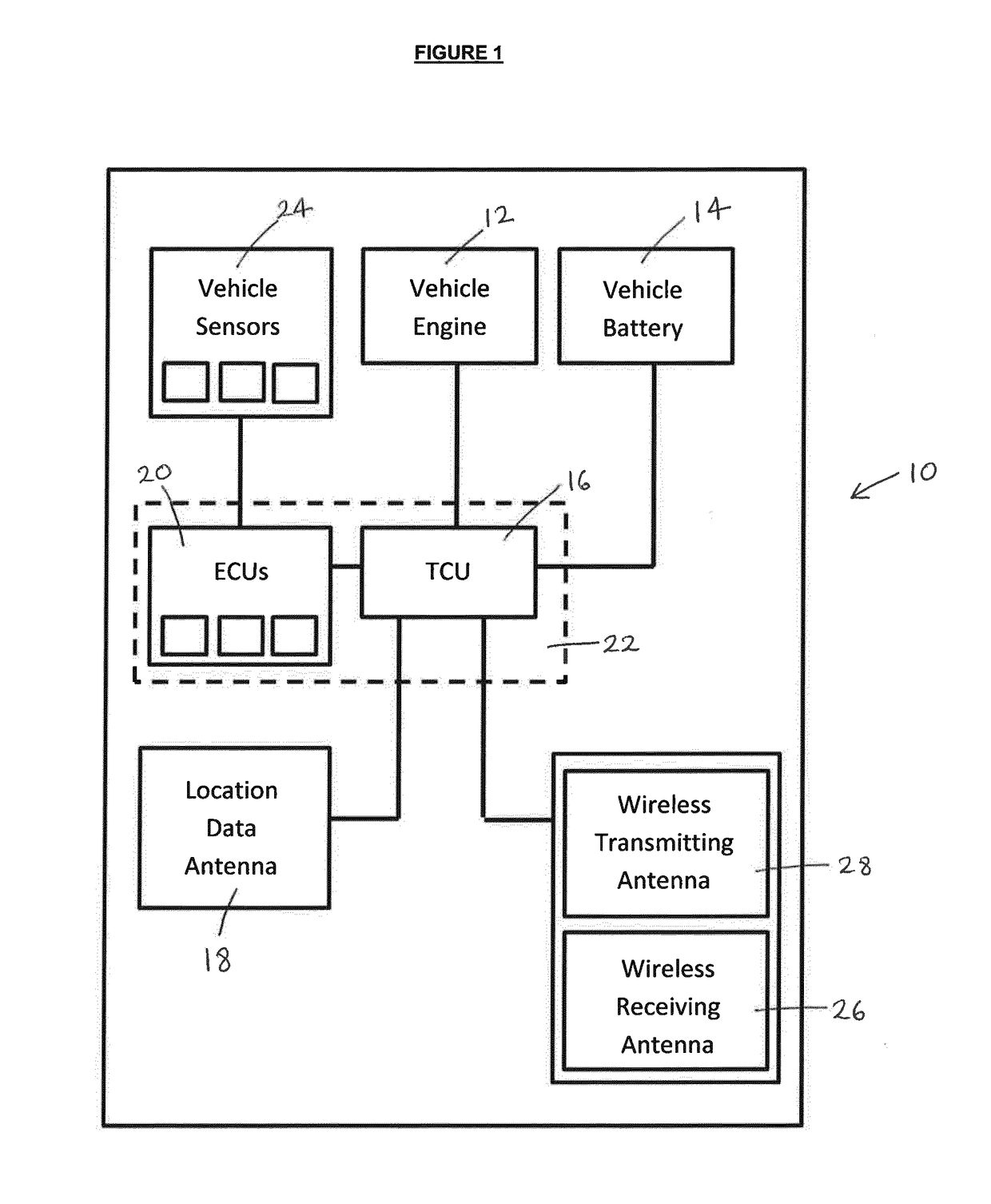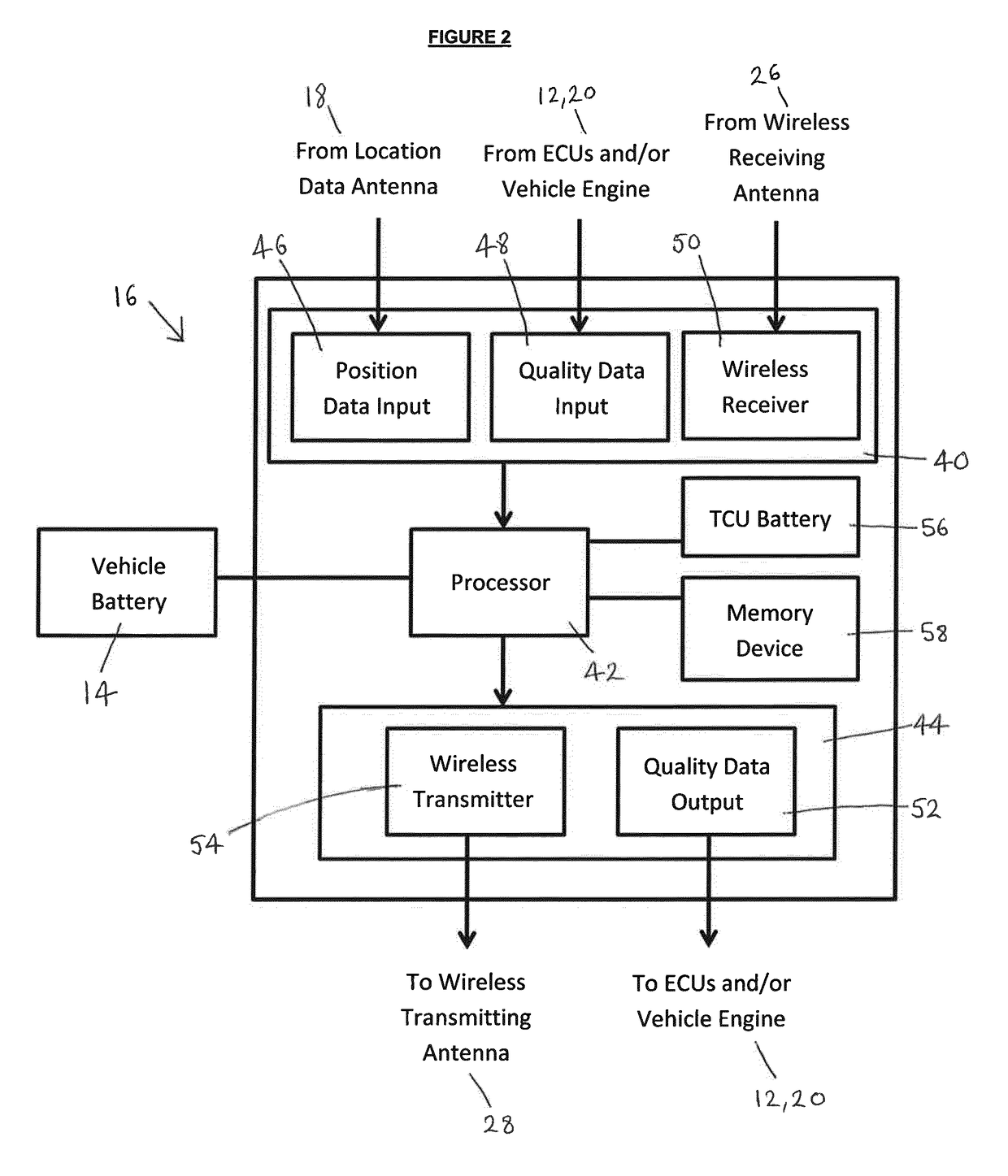Telematics control system tracking and monitoring
a technology tracking system, which is applied in the field of telematics control system, can solve the problems of inability to accurately determine the fuel content of a vehicle, inability to timely and accurate record information into a system database, and inability to save time. , to achieve the effect of reducing power consumption, not wasting battery power, and saving tim
- Summary
- Abstract
- Description
- Claims
- Application Information
AI Technical Summary
Benefits of technology
Problems solved by technology
Method used
Image
Examples
Embodiment Construction
[0035]FIG. 1 shows one embodiment of a vehicle 10 with a vehicle engine 12 and a vehicle battery 14, the vehicle 10 also including a telematics control unit (TCU) or telematics control system 16 for carrying out a method according to an aspect of the present invention. In addition, the vehicle 10 includes a vehicle location data antenna or sensor 18 for receiving location data relating to the current location of the vehicle 10. For example, the location data antenna 18 may be a Global Positioning System (GPS) antenna for receiving signals from a GPS satellite, or could be compound, multiple or substitutable antennas for receiving from other positioning systems such as GLONASS, BeiDou or Galileo. The TCU 16 is in communication with one or more other electronic control units (ECUs) 20 via a controller area network (CAN) 22, or other vehicle network infrastructure such as TT Ethernet or Flexray. For example, the ECUs 20 may be for monitoring and / or controlling so-called vehicle feature...
PUM
 Login to View More
Login to View More Abstract
Description
Claims
Application Information
 Login to View More
Login to View More - R&D
- Intellectual Property
- Life Sciences
- Materials
- Tech Scout
- Unparalleled Data Quality
- Higher Quality Content
- 60% Fewer Hallucinations
Browse by: Latest US Patents, China's latest patents, Technical Efficacy Thesaurus, Application Domain, Technology Topic, Popular Technical Reports.
© 2025 PatSnap. All rights reserved.Legal|Privacy policy|Modern Slavery Act Transparency Statement|Sitemap|About US| Contact US: help@patsnap.com



